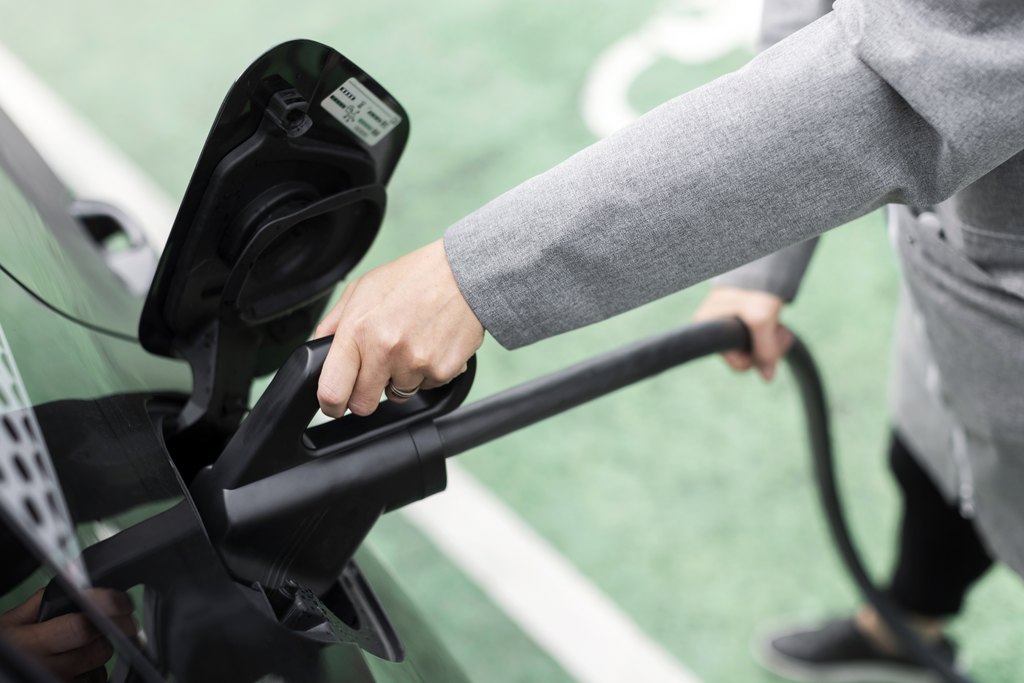Electric vehicle batteries and charging
Electric vehicle batteries and weather conditions
Do electric vehicle batteries need to be stored in warm conditions? Not necessarily. Electric vehicles have automated battery heating and cooling systems, which means that each vehicle ensures that its batteries are at the correct operating temperature. In cold weather, part of the charging current is used to heat the batteries. Then again, keeping the vehicle in a warm place during winter makes charging quicker.
Charging an electric vehicle at home
Home charger
A home charger designed for electric vehicles is the recommended way to charge an electric vehicle. Its connection has been designed to withstand the charging current, and it is equipped with a residual-current device. It is also significantly faster and safer than a regular wall socket which is not intended for long-term charging. A home charger enables load balancing, timing, and the use of the vehicle batteries as a back-up power unit.
Charging from a regular wall socket
Regular grounded wall sockets (16 A) are not designed to withstand continuous and recurring high loads, such as the overnight charging of an electric vehicle. Sockets in poor condition, in particular, may heat dangerously when used in this way. Over time, overheating may cause the socket to blacken and the connectors to become worn. In the worst case, the socket may catch fire. A heavy charging cable hanging freely from a wall socket may cause tension and wear in the socket.
Electric vehicles are equipped with a Mode 2 charging cable, allowing them to be charged from a regular wall socket. When using such a cable, it must be ensured that the socket used is in good condition.
It is recommended that a maximum current of 8 A be used when charging from a wall socket. This is the default value in many Mode 2 charging cables. Some charging cables enable the user to change the current. The in-cable control box should be supported well to prevent it from causing tension in the wall socket. The use of extension cords or plug-in timer switches is not recommended as they increase the number of connections that may also overheat. More car manufacturers prohibit the use of various adapters with Mode 2 charging cables in their instructions.
CEE sockets
If a home charger cannot be installed, a CEE socket can be used. While they do not have a separate product standard and their dimensioning is similar to that of regular wall sockets, manufacturers promise that they withstand a continuous current of 16 A without overheating.
If you charge your electric vehicle from a CEE socket, check regularly that wiring is in good condition. Repeated connections and disconnections will loosen the contacts over time. It should be noted that sockets designed for continuous 16 A charging should be the only socket in a group, not chained so that the group also includes regular wall sockets.
Questions related to the installation of a home charger
If you want to know whether a charger at your home or in your housing company has been installed correctly or how one should be installed, the Finnish Safety and Chemicals Agency (Tukes) cannot unfortunately give you an answer. Tukes does not issue statements on individual plans or the compliance of individual equipment with requirements. Standards are interpreted by inspectors and inspection bodies authorised by Tukes. For contact details of inspection bodies, go to https://tukes.fi/web/tukes/asiointi/rekisterit-ja-patevyydet/sahko-ja-hissit and select “Sähkölaitteistotarkastusten tekijät (Inspectors of electrical equipment)”.
Handling the charging cable
No electric current comes from an electric vehicle’s charging cable plug until it is connected to the vehicle. Of course, the cable and charger must be undamaged. The charging cable can be left in its place between charges if it is located in a locked space which children cannot access unsupervised. However, the safest way is to disconnect the cable because a hanging cable causes tension.
Instructions for most charging cables state that the in-cable control box should be supported so that it is not only suspended by the cable. A hanging unit carries so much weight that it causes tension in the socket. This may weaken the contact over time and also cause extra tension in the in-cable control box. Furthermore, the charging cable is fairly expensive, and it should not be left exposed to vandalism or theft.
